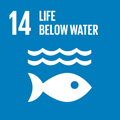- Docente: Albamaria Parmeggiani
- Credits: 3
- SSD: VET/02
- Language: Italian
- Teaching Mode: Traditional lectures
- Campus: Cesena
- Corso: First cycle degree programme (L) in Aquaculture and Fish Production Hygiene (cod. 8834)
Learning outcomes
At the end of the course, the student is able to understand the physiological and behavioral strategies of adaptation of aquatic organisms (mainly teleost) to the biotic and abiotic, natural and breeding environmental components. He will know what are the main challenges that must be faced in intensive breeding conditions for the maintenance of physiological homeostasis.
Course contents
INTRODUCTION: general strategies for adaptation to the environment in aquatic regulatory animals
THE ABIOTIC ENVIRONMENT: resources and challenges in different contexts, natural and farmed
THE BIOTIC ENVIRONMENT: resources and challenges in different contexts, natural and farmed:
hormonal response to stress
role of catecholamines
perception of ambient oxygen and multiplicity of hemoglobin
behavioral responses to temperature
nociception and pain in fish
impact of stress on health and reproduction
Readings/Bibliography
Fisiologia degli animali marini. Alessandro Poli, Elena Fabbri. II edizione 2018 EdiSES s.r.l, Napoli.
Encyclopedia of Fish Physiology From Genome to Environment Reference Work • Editor-in-Chief: Anthony P. Farrell; Elsevier 2011
Fisiologia animale. R. Hill, G. Wise, M. Anderson. Zanichelli editore, Bologna 2006
Teaching methods
Frontal and streaming lessons. Seminars on specific topics. Group work led by the teacher.
Students with special needs are invited to contact the teacher by email or at the end of the lessons, to illustrate them and better organize the teaching and the conduct of the exams.
Assessment methods
In cases where provided for by the DSA and Disability regulations, aids are allowed which must be agreed in advance with the teacher (= before taking the exam) and with the teaching services of the CdS.
Interview with the student on the entire C.I.
value scale that determines the final grade
preparation on a limited number of topics covered in the course and analytical skills that emerge only with the help of the teacher expression in an overall correct language: 18-19
preparation on a limited number of topics covered in the course and autonomous analysis skills with modest connection skills expression in correct language: 20-24
preparation on a large number of topics covered in the course ability to make independent choices of critical analysis and connection between topics, mastery of specific terminology: 25-27
substantially exhaustive preparation of the topics covered in the course ability to make connections and autonomous choices of critical analysis, full mastery of specific terminology with capacity for argumentation and self-reflection: 28-30-30L
70% of the vote will relate to the assessment of the interview.
30% of the vote will relate to the evaluation of team work.
Teaching tools
Slides provided in IOL.
Study material such as scientific articles.
Video projection equipment.
Office hours
See the website of Albamaria Parmeggiani
SDGs



This teaching activity contributes to the achievement of the Sustainable Development Goals of the UN 2030 Agenda.
